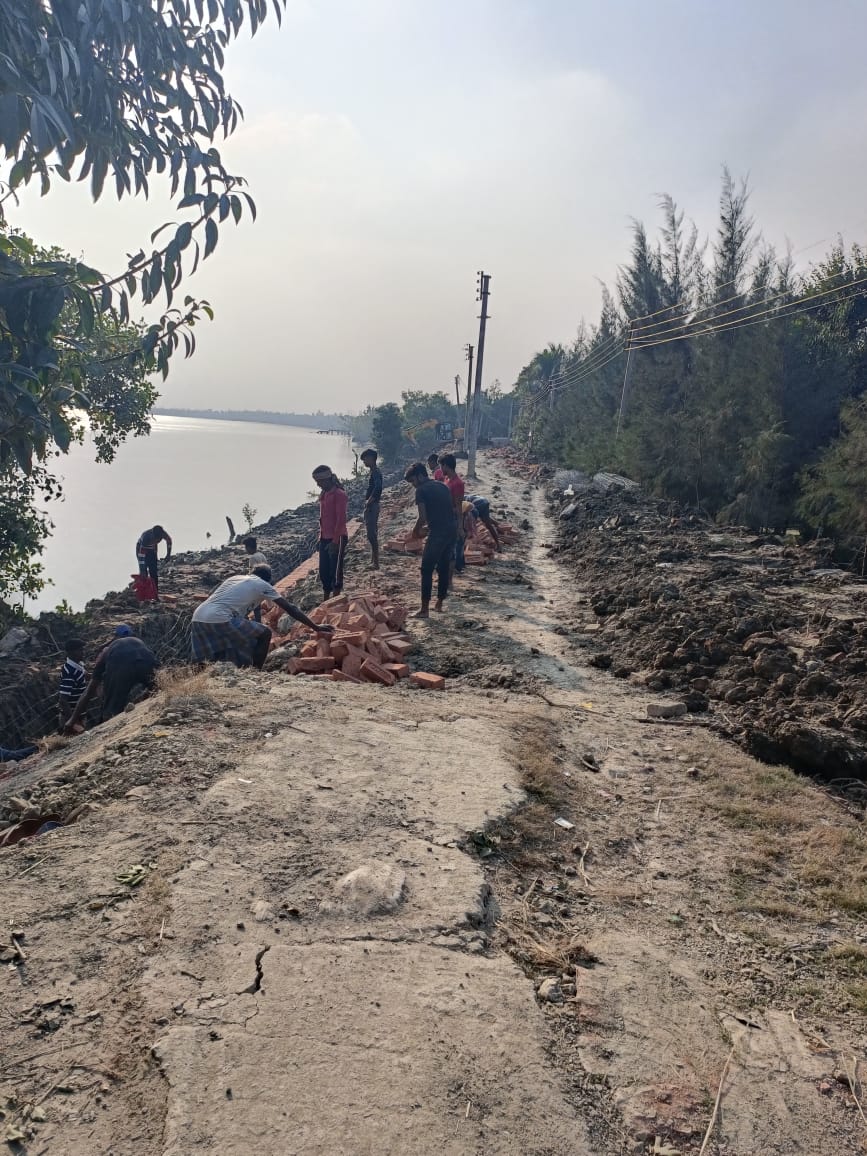Work to build roads and embankments promised post cyclone Amphan still underway, locals fear that another storm will wash villages away
Srijita Bose | January 5, 2024
Pramila Mondal, a farmer from Gosaba, Sundarbans, along with others in the village had to create a human shield with whatever they could find to prevent the saline river water breaching the banks and entering into their fields and homes during the super cyclone Amphan in 2020. “With water over our heads, we stood by the embankments holding tarpaulin to prevent water from entering.”
This human shield was the only line of defence to keep the embankments around this village in Sundarbans from getting submerged. “There were many who almost drowned, but still held on as parts of the bank slowly washed away,” she said. “It was a terrifying experience.”
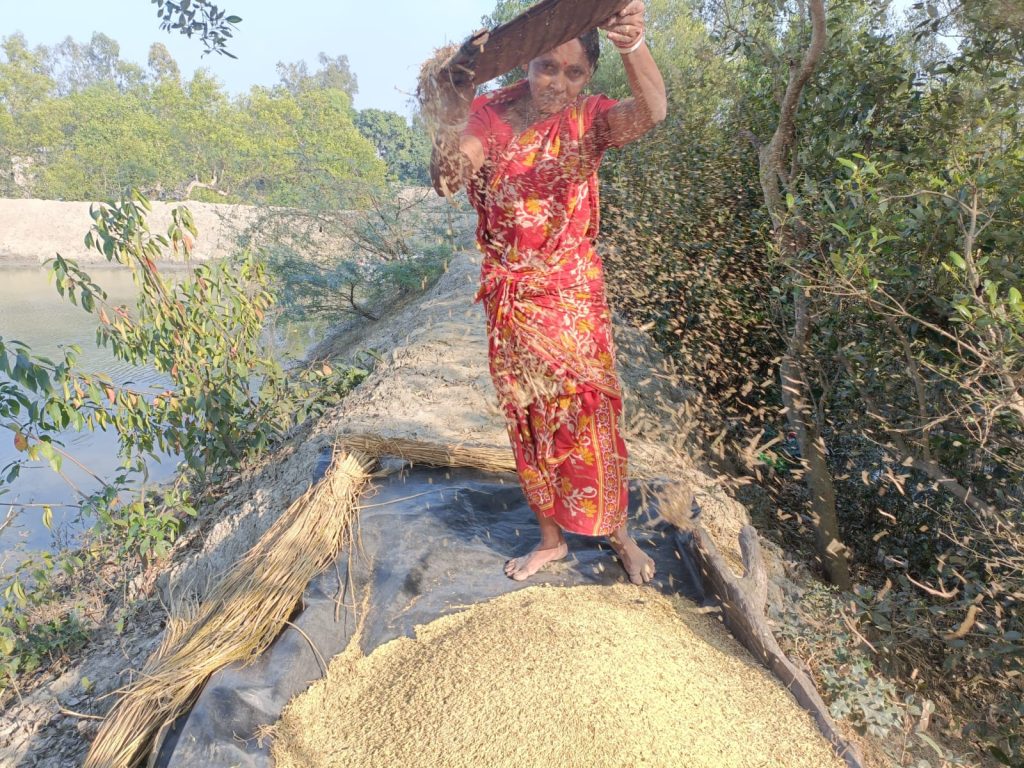
Gosaba is one of the largest blocks of the Indian part of Sundarbans. Three years after Amphan which swept through West Bengal, Odisha, as well as parts of Bangladesh, most of the roads and embankments in Sundarbans that were washed away by the cyclone still remain broken.
The government of West Bengal estimated damages of Rs.1.02 lakh crore caused by Amphan, the most damage caused by a cyclone in the past decade. Chief Minister Mamata Banerjee of the Trinamool Congress Party that came to power for the third time in 2021 had promised to “rehabilitate and restore” the Sundarbans after Amphan in the party’s election manifesto.
Parts of the roads washed away or damaged across the river banks stretching 3,500 kilometers due to Amphan are still being constructed three years on. A road in Bally, Gosaba connecting villages like Amlamethi to the nearest hospital remains to be built till date after part of the road and the banks were washed away in worst hitting cyclone of the decade.
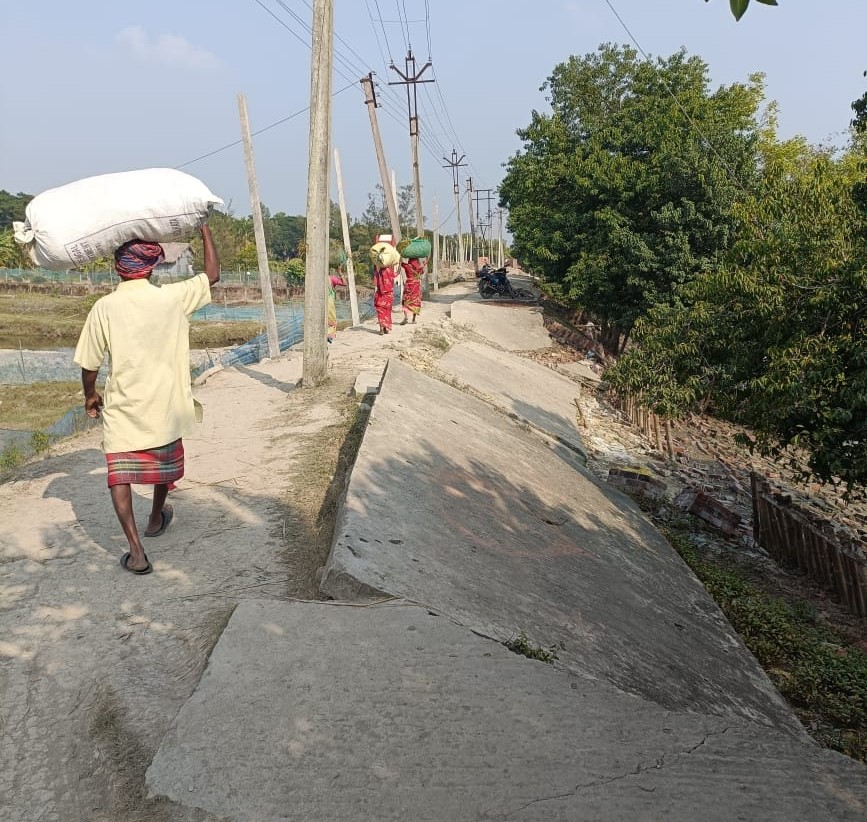
Swapan Mondal, 50, a fisherman living in Bally said he has an ailing mother who has to walk a stretch of five kilometers to reach the motorable roads to get a vehicle to go to the doctor. The road outside his house has still not been re-laid since Amphan and public transportation cannot reach there. This has forced Mondal’s mother to visit an unlicensed medical practitioner in the neighborhood.
Data from the Sundarban Affairs Ministry show that from April 2020 to December 2023, a total of 1,028 kms of roads, nine jetties and eight bridges were built. The data, however, did not specify the extent of infrastructure damage in the Sundarbans.
The current Sundarban Affairs minister, Bankim Chandra Hazra of the Trinamool Congress party declined to give comments on the matter. Emails sent to the Sundarbans Affairs ministry seeking comparative data and comments regarding the initiatives also went unanswered.
Kanti Ganguly, the former Sundarban Affairs Minister and a member of the CPI(M) said that it is imperative to build infrastructure such as roads, embankments, jetties at Sundarbans to preserve life as the area is key to the fate of the state. “If both the governments (state and centre) do not work together and bring out a solution, Kolkata will be next to go under water,” said Ganguly. “ Sundarbans is like a premature baby. Sure, the baby has difficulties and needs support to live. But that doesn’t mean we abandon the child,” said Ganguly referring to the lack of the state government’s initiative to rebuild and restore the infrastructure at Sundarbans.
Villagers at Amlamethi, Gosaba said that the destroyed roads and embankments were rebuilt by the locals using mud to keep the river water from flooding the villages. “The embankments are still what the villagers made. During cyclone Yaas in 2021, some of those mud banks were also washed away. If another wave comes the entire village will be underwater,” said Ekadashi Mondal, who runs a small family shop in Amlamethi, Gosaba.
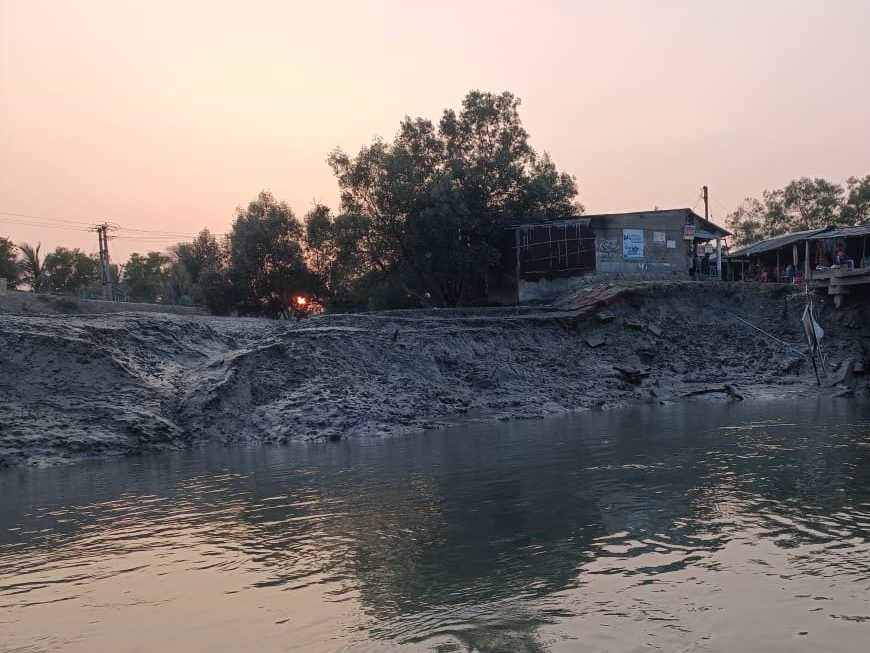
In the past decade alone, the Sundarbans has been hit by four major cyclones, all of them having damaging impacts on the ecosystem in the area. This assumes significance as the climate vulnerability of Kolkata was discussed during the 28th COP28 Convention on Climate Change summit held in Dubai in November 2023. Kolkata, the capital of West Bengal, only 100 kms from the delta remains at a high risk of bearing the brunt of climate change and thus, demanded a loss and damage fund.
In 2010, the New Moore island located in the Sundarbans got submerged irreversibly under water. Climate experts suggest that with the rising water levels due to global warming, the Sundarbans would likely disappear under water by the end of 2050.
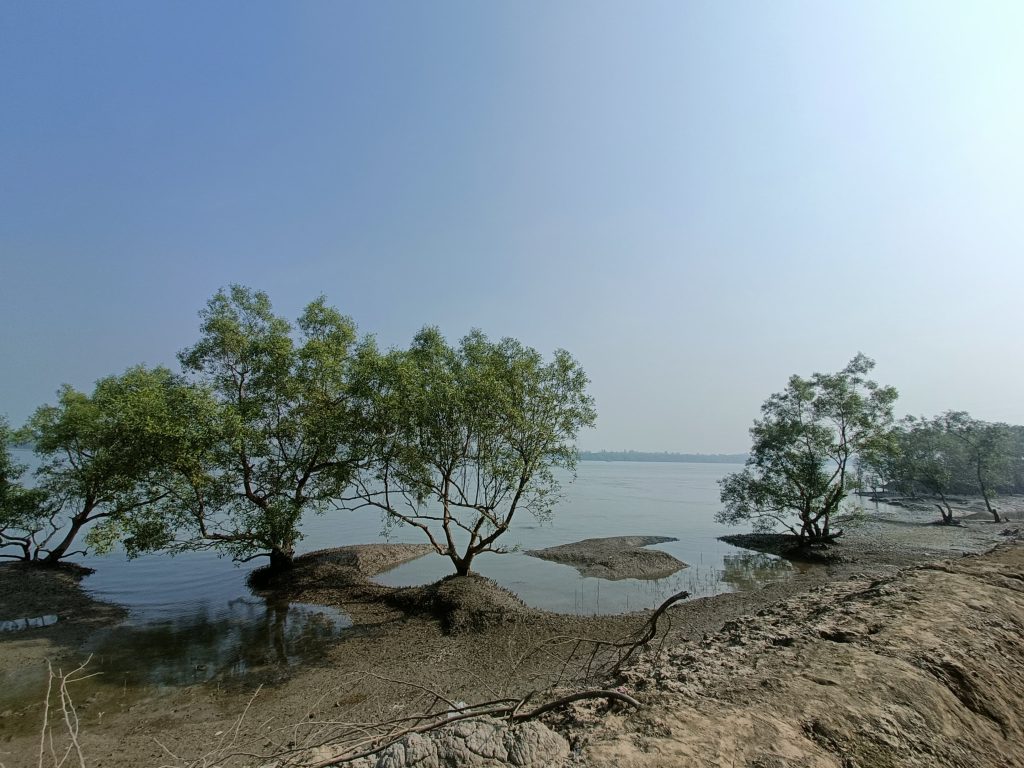
A three-part defense system consisting of mangroves, concrete and brick embankments, and trees near the villages was suggested by an expert committee of the Department of Disaster Management and Civil Defense in 2009, after superstorm Aila, to protect the villages from future climate catastrophes. This, according to Ganguly, never materialized due to the change in government in 2011, despite a sanction of Rs.532 crore.
The present state government had promised to plant 50 million mangroves to combat soil erosion, and the impact of cyclones on the islands. During the years of April 2020 to December 2023, a total of 850 Hectares of mangrove was planted by the Sundarban Affairs department. Many of these mangroves planted though have been uprooted or destroyed.
The regular onslaught of climate crisis in the Sundarbans have created challenges for people to earn a livelihood and the people are left with limited options and resources to fend for themselves. Increase in tourism in parts of the region has helped people find jobs to sustain their livelihood, said Subimal Bera of Chetana Sangha, an NGO working with farmers in Patharpratima in Sundarbans.
Mondal also had to start working as a helper in a nearby eco-tourism resort as she says that she is barely able to cultivate wheat and vegetables to feed her family due to the increased salinity of the soil caused indirectly by the cyclone. She says that “life here is a struggle”.

